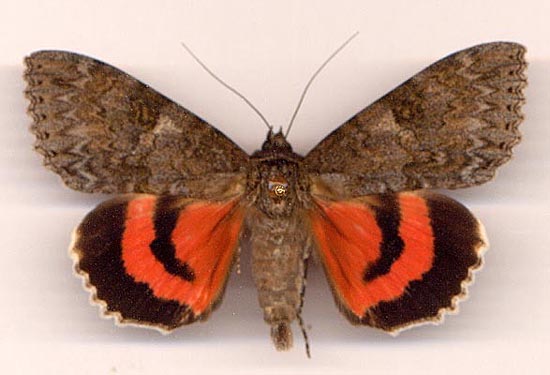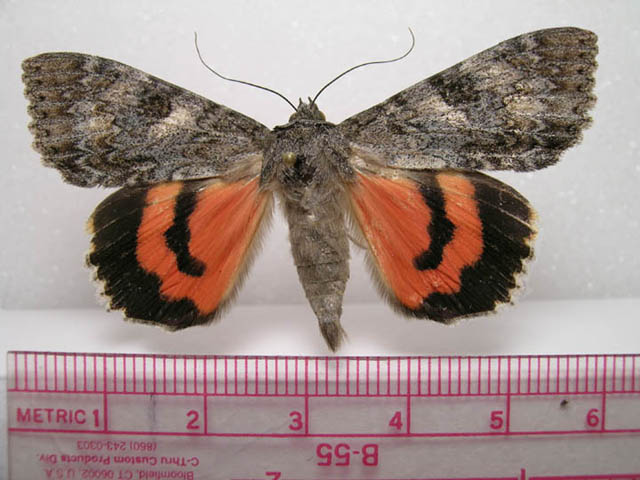Catocala faustina
Catocala faustina
kah-TOCK-uh-lahmmfows-TEE-nuh
Strecker, 1873

Catocala faustina from Escondido, California, courtesy of Kirby Wolfe.
This site has been created by
Bill Oehlke at oehlkew@islandtelecom.com
Comments, suggestions and/or additional information are welcomed by Bill.
| TAXONOMY:
Superfamily: Noctuoidea
Family: Noctuidae
Group: Noctuinina
Subfamily: Catocalinae
Genus: Catocala, Schrank, 1802
| |
MIDI MUSIC
"Moon River"
copyright C. Odenkirk
MIDI CITYON.OFF
<bgsound src="moon.mid" LOOP=FOREVER>
|
DISTRIBUTION: Catocala faustina
(wingspan: approximately 58mm), flies from Colorado west to
California and north
through Washington to British Columbia.
It has also been reported in
Idaho,
Montana,
Nevada,
Oregon,
Wyoming and
Utah.
Specimens from the coastal areas of northern California, Oregon,
Washington and British Columbia are classified as C. faustina allusa.
C. faustina allusa blends with C. faustina cleopatra
in northwestern California, and with C. faustina faustina in the Rocky Mountains of
Idaho, Wyoming and Montana.
The hindwing inner band is narrow and
truncated well before the inner margin. The two "teeth" in the forewing postmedial line
are relatively short. |  |
Scott Shaw reports faustina is common
"on Pole Mountain, in the Medicine
Bow Forest, Wyoming, about 10 miles east of Laramie near I-80 in
the mountain willow bogs."

C. faustina, June 20, 2002, Pinnacles National Monument,
San Benito, California, courtesy of Paul Johnson.
FLIGHT TIMES AND PREFERRED FOOD PLANTS:
Catocala faustina are probably on the wing in September and October.
The Catocala faustina caterpillar feeds on Salix.
ECLOSION:
Adults eclose from pupae at soil surface.
SCENTING AND MATING:
Catocala faustina females
emit an airbourne pheromone and males use their antennae to track the
scent plume.
EGGS, CATERPILLARS, COCOONS, AND PUPAE:
Eggs are deposited on
tree bark in the fall and hatch the following spring.
Larval Food Plants
Listed below are primary food plant(s) and alternate food plants.
It is hoped that this alphabetical listing followed by the common
name of the foodplant will prove useful. The list is not exhaustive,
although some species seem very host specific.
Experimenting with closely related foodplants is worthwhile.
Return to Main Index
This page is brought to you by
Bill Oehlke and the
WLSS. Pages are on space rented from Bizland. If you would like
to become a "Patron of the Sphingidae/Catocala Sites",
contact Bill.
Please send sightings/images to Bill. I will do my best to respond to
requests for identification help.


